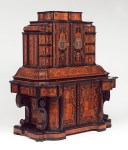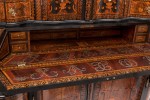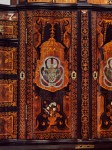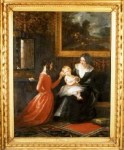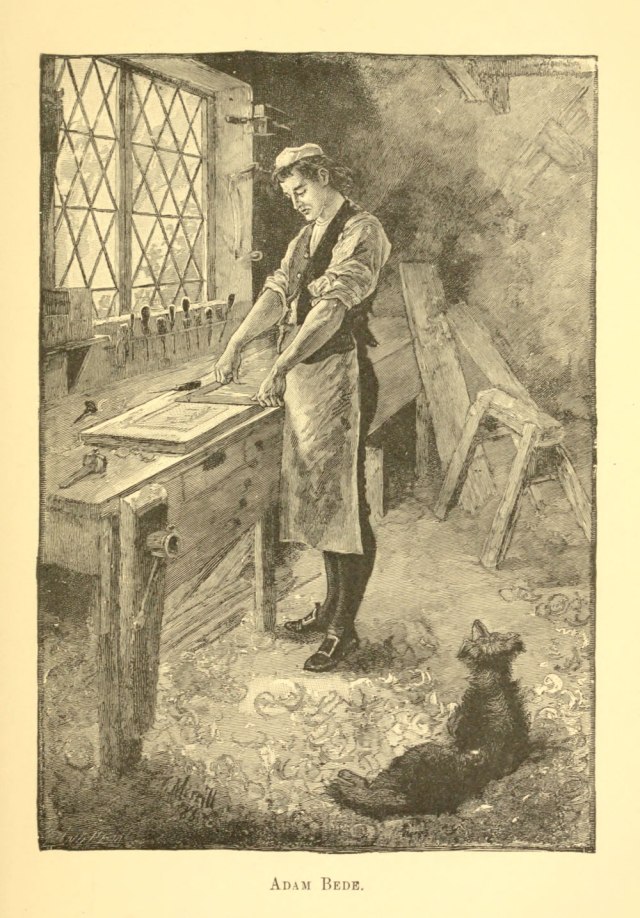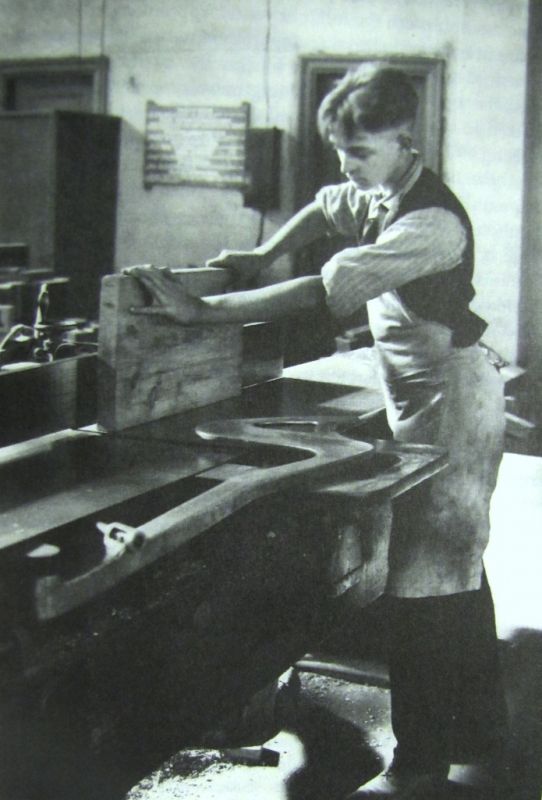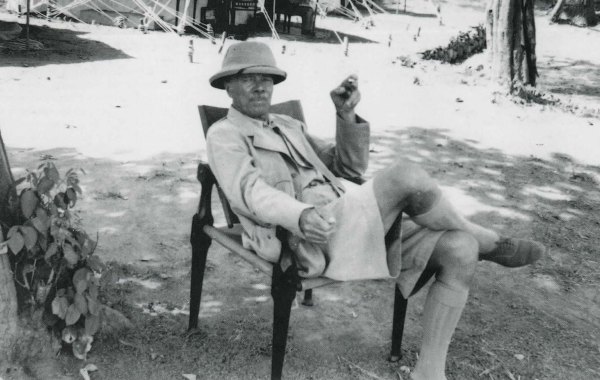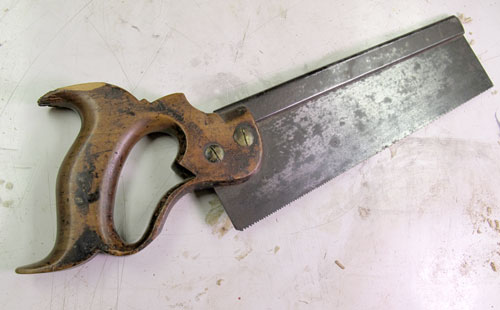“When cabbage and peas were often our best meal.” A Letter from an 18th-century Journeyman Cabinetmaker –

In late October 1716 Jacob Arend, a journeyman cabinetmaker, was 28 years old and at a crossroads. He and his fellow journeyman, Johannes Witthalm, had recently finished work on a writing cabinet. They both worked for Servacius Arend, Jacob’s older brother and the cabinetmaker to the court of Würzburg in Germany. The writing cabinet was a masterpiece but Jacob felt the need to write a letter and conceal it in the cabinet. He made sure it would not be easily found and he was very successful in this endeavor. The letter was not found until December 1967 and it wasn’t until 2014 that the letter was translated and studied.

Before examining the letter let’s take a look at the last piece Jacob and Johannes made in the Würzburg workshop. The writing cabinet is a Baroque behemouth bursting with curved surfaces and marquetry. The cabinet is almost 71 inches high (180 cm), 65 inches wide (165 cm) and the depth is almost 31 inches (78 cm). It appears to be in three pieces but is actually in two pieces. The writing cabinet was made for Jacob Gallus von Hohlach. The double doors of the top section bear von Holhlach’s arms and the writing flap his cypher — JEALUS JACOB.

The carcase is pine with veneering in walnut. Marquetry woods are burr walnut, sycamore, tulipwood, boxwood, ebonized and stained woods; other materials include ivory, bone, turtle shell, pewter and brass. The cypher of von Hohlach is laid into snakewood. The drawers are lined with embossed decorative papers; cupboards are lined with red silk.
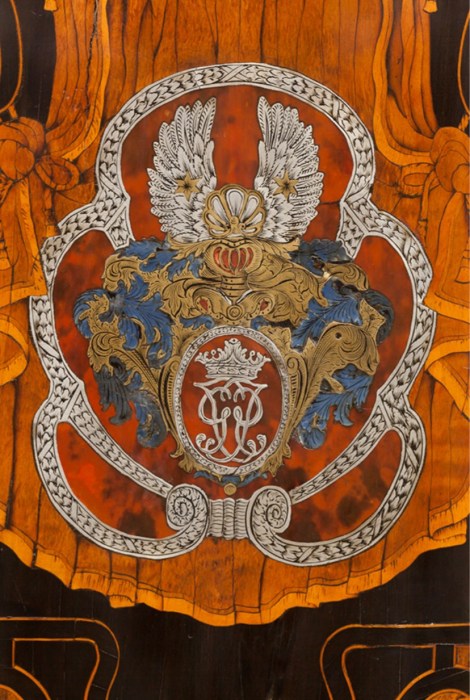
Some time after the writing cabinet was finished Jacob Arend wrote his letter filling both sides of one piece of paper. The letter was put in a recess under the lower right hand drawer; the drawer can be seen when the writing flap is open. Secret compartments were not a novelty in 18th-century furniture but Jacob took the additional measure of gluing down the two pieces of wood that protected his hiding place.
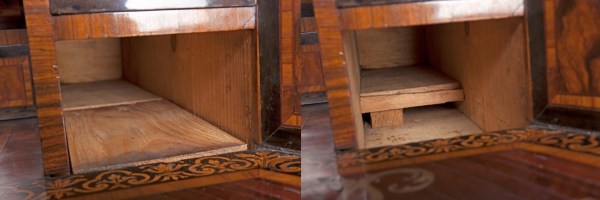
The writing cabinet and Jacob’s letter are in the collection of the Victoria and Albert Museum. This translation is provided by the V&A.
“This cabinet was made by Jacob Arend of Koblenz and Johannes Witthalm of Vienna, who are at present journeymen cabinetmakers in the service of Master Servacius Arend, court cabinetmaker in Würzburg. It was made in the year 1716, when cabbage and peas often were the best meal we could obtain. As a result we have grown so fat that we can hardly climb the stairs any more, but meat has been in very short supply for us, God pity us. There was seldom warm bread in our kitchen, but the wine has always tasted good; when we have earned one week’s wage, two have already been drunk, for wine has become dear this year with the vintage having been poor the last four years. This year there has also been a great war in Hungary against the Turks.”
On the back of the page:
“I, Jacob Arend, invented this cabinet in my own mind and have drafted it all and marked it out. I have cut it [the marquetry] with a fret-saw and shaded it. This was done in the Sander quarter, near Korn Gasse by the river Main. But neither of us will be staying here much longer. This cabinet has been completed in the winter month[s], and we would like to go elsewhere, for little meat and a great deal of cabbage and turnips have driven us out of Würzburg. We ask him who finds this note to drink our health and if we are no longer living then, may God grant us eternal rest and salvation. This 22nd day of October in the year 1716.”
Jacob’s letter gives us a window into a workshop capable of producing a writing cabinet using materials from at least three continents while the craftsmen were living in very straitened circumstances. The contrast between the rich details and opulence of the cabinet and the makers’ steady diet of cabbage and peas is startling. Jacob was working in his brother’s court-appointed workshop, which probably gave him some level of security, but had reached a point of desperation. How had living conditions deteriorated to the extent he and Johannes decided they had to leave? Life traveling from town to town seeking work was not only dangerous there was also no guarantee they would find enough work and wages to survive.
In describing their diet and lack of bread and meat Jacob gives us a key to what had happened to their food supply. In the V&A analysis the harsh winter of 1714-15 was noted as having a dire impact on the following year’s harvest. I did my own investigation to learn more about the weather conditions.
Europe at that time was in a weather pattern called the Late Maunder Minimum (LMM) also known as “The Little Ice Age.” The winter of 1714-15 was very cold and dry and the beginning of a drought that would cause crop failures. There were also more instances of forest fires. With a shortage of grains, prices were raised, farmers could afford to feed fewer livestock and grains for bread and other foodstuffs became more scarce. Drought conditions caused water levels to drop and transport of goods, including lumber, became more difficult and costly. Jacob mentions the poor grape harvest the last four years (and increased price of wine) indicating an extended period of poor crop yields. Jacob writes in a joking manner, “…we have grown so fat that we can hardly climb the stairs any more.” The V&A analysis indicated the term fat may mean bloating from the diet of cabbage and peas or could be the much more serious symptom of prolonged starvation. In the German text there is some ambiguity on whether Jacob had written about the lack of ‘broden’ (bread) or ‘braden’ (roast meat). If they were at the point of a scarcity of bread their level of hunger was more severe.
An additional factor adding instability to the region was another war with Ottoman forces. European forces led by Prince Eugene of Savoy won the Battle of Peterwardein in August 1716. The recipient of the fancy cabinet (von Hohlach) supplied troops and supplies to Prince Eugene and this likely caused an additional drain on local resources.
Based on the workmanship in the writing cabinet and the fact that Jacob was from Koblentz it is thought he may have trained in Mainz (further up the river Main). As journeymen Jacob and Johannes probably had some familiarity with the conditions and dangers they would face once they became itinerant craftsmen. Besides the hunger they were suffering, I wonder if the workshop had already experienced a significant decrease in the quantity of work coming in. Also, Jacob was a bachelor and may have thought about how he could reduce the economic burden on his brother’s family. One or two less mouths to feed could certainly make a difference.
With the writing cabinet completed and the decision made to leave the shop, Jacob wrote his “message in a bottle.” I don’t see any great mystery on why he wrote his letter and why he hid it. The workshop had endured months of growing hunger while building a magnificent monster. Facing an extremely difficult and perilous future Jacob was saying “I was here and I made this!” The cabinet was his design; he worked on the marquetry and the veneer. He was proud of the cabinet while at the same time very aware that it might be the last piece he would ever make. As a journeyman this was the only way he had of signing his work. Jacob built the cabinet with his talent and sweat and with the letter he was adding one last and very personal part of himself to the piece. He wanted to be remembered.
So what happened to the two journeymen? There is no other record of Johannes Witthalm. Ten years after leaving Würzburg Jacob Arend was appointed cabinetmaker at the court of Fulda and in 1744 he died at age 56. Two years later his son, Carl Philip, was appointed cabinetmaker to the court at Fulda.
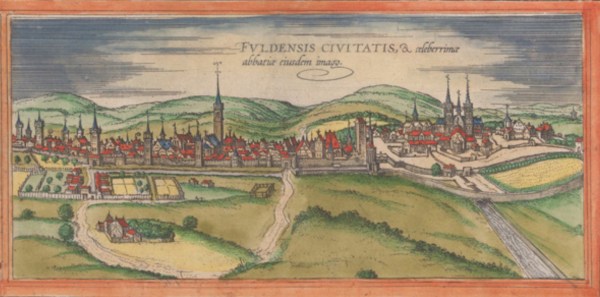
The owner of the Würzburg writing cabinet, von Hohlach, was booted out of his position not long after the cabinet was completed. The cabinet and other court furniture were sold to England early in the 19th century when Würzburg became part of Bavaria. The last English owners were the Gibbons. The cabinet is in the background of the 1846 painting “The Shell” by Charles Robert Leslie (commissioned by John Gibbons). On December 26, 1967 two young Gibbons boys were searching for secret compartments and found Jacob Arend’s letter. The cabinet was loaned to the V&A in 1968 and sold to the museum in 1977.
–Suzanne Ellison
